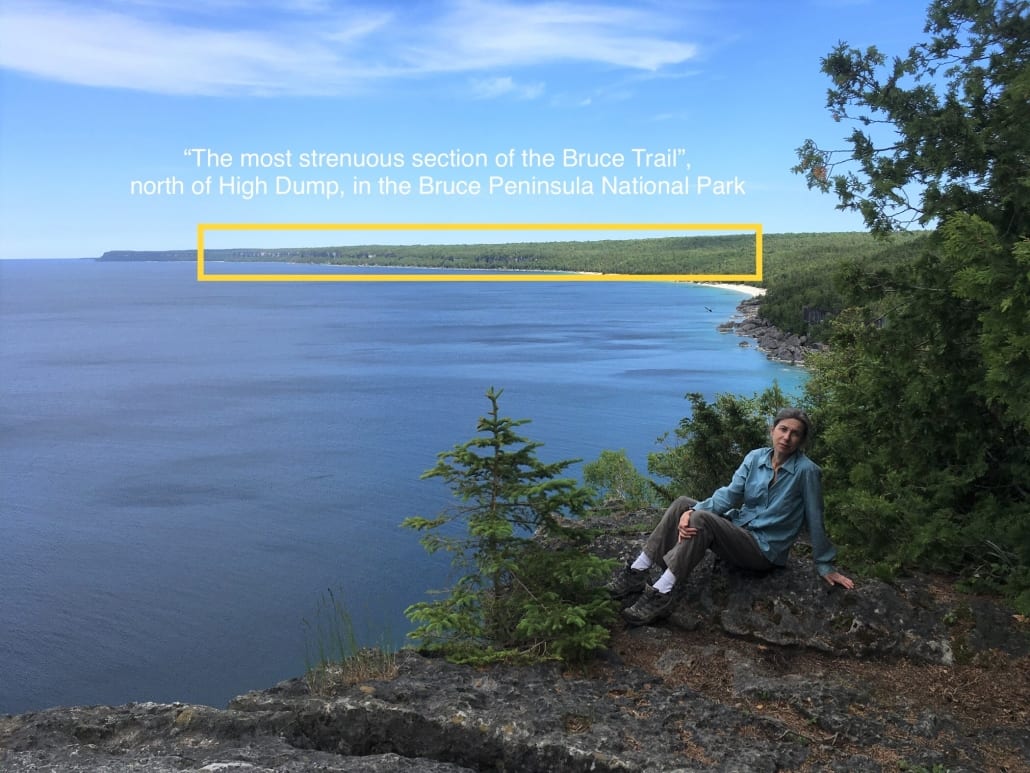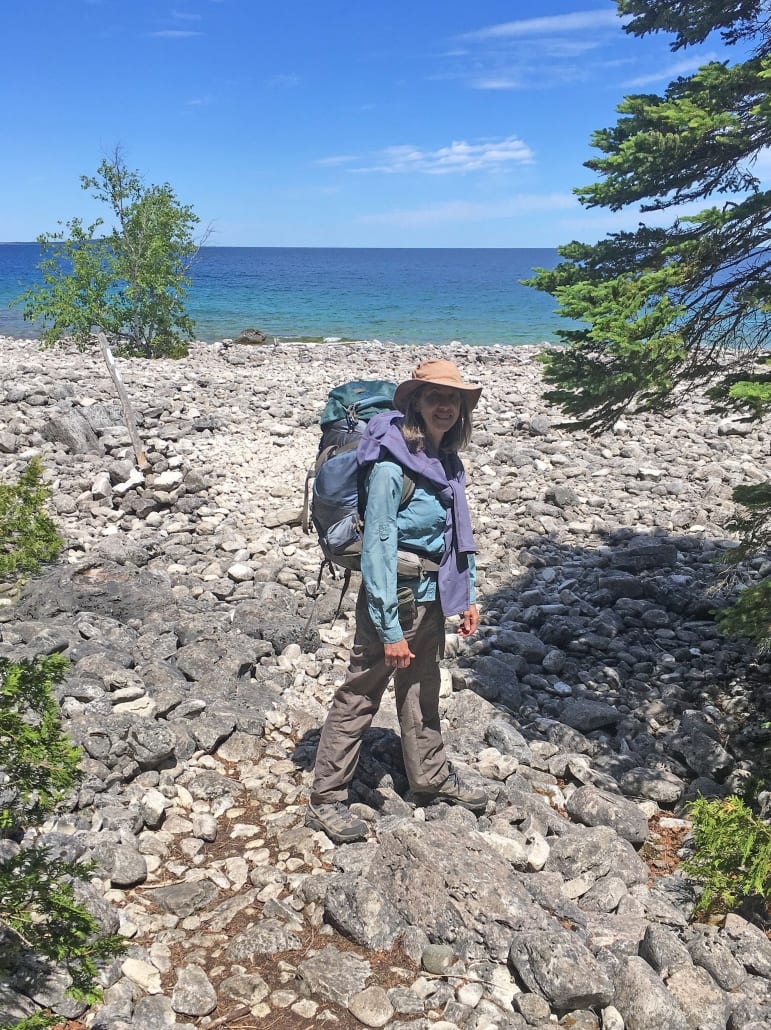Do you know how strong your bones are?
Recently I hiked the most strenuous section of the Bruce Trail (the northern section in Bruce Peninsula National Park).
With a heavy backpack, I hiked 24 km (return) in 48 hours, mainly on rocky ground, over boulders, up and down cliff faces (really!), and so on. I had to stop to enjoy the beautiful vistas because I couldn’t walk safely without looking at the ground.

The first goal of this adventure was not to get injured, most likely by breaking a bone after falling.
That’s because at my age, over 50, if I (or you, if you’re over 50) fall from a standing height and break a bone, I will be diagnosed with osteoporosis and most likely will have to take medication to prevent future factures. Best to avoid that!
Here are some numbers to elucidate the importance of preventing osteoporosis and fractures:
- The most important risk factor for bone loss in midlife women is menopause (all women go through menopause!)
- Women lose 50% of their bone during their lifespan and half of that loss happens in the first 10 years after menopause (the last menstrual period)
- Osteoporosis affects over 20 million Americans
- Osteoporosis leads to approximately 1.5 million fractures each year
- In 2001, the National Osteoporosis Foundation estimated that the annual cost of health care and lost productivity related to osteoporosis was $17 billion
What can you do to prevent osteoporosis and fractures?
- Consume enough calcium, protein, vitamin D, and magnesium. As you age your ability to absorb vitamins and minerals may be reduced. The healthiest calcium comes from food; supplementation should be considered when dairy consumption is low. Check here how much calcium you are eating on average from your diet. You can also check the content of calcium in foods other than dairy.
- Get enough vitamin D through exposure to sunlight (about 15 minutes of daily sun exposure). If you’re over 50 and live in a northern country like Canada you should supplement with 1000-2000 IU of vitamin D daily
- Maintain a healthy body weight – being too thin (BMI under 19) is damaging to your bone health.
- Move! Regular weight-bearing exercise is best for bone health. But you should also participate in exercise activities that improve balance, posture, coordination, and muscle strength.
- Be cautious about preventing falls, inside the home and outside, or especially if you’re hiking the most strenuous section of the Bruce Trail!
- Don’t smoke
- Drink (alcohol) moderately or not at all (more than one alcoholic drink per day also increases your risk of breast cancer, and all alcohol ruins your sleep)
- Be aware of your osteoporosis risk factors, and get an early diagnosis and treatment if needed.
Would you like to know your osteoporosis risk factors? The proper amount of calcium and vitamin D for you? Schedule a FREE Discovery Call with me. I’d be happy to talk with you about your bone and muscle health – and your menopause, of course!
Get out there this summer. Move. A lot. Carefully!




